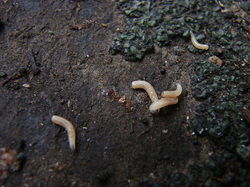 From Fox NewsDrinking just one can of sugar-laced soda drink a day increases the risk of developing diabetes by more than a fifth, according to a large European study published. Using data from 350,000 people in eight European countries, researchers found that every extra 12 fluid ounce (340 ml) serving of sugar-sweetened drink raises the risk of diabetes by 22 percent compared with drinking just one can a month or less. "Given the increase in sweet beverage consumption in Europe, clear messages on the unhealthy effect of these drinks should be given to the population," said Dora Romaguera, who led with study with a team at Imperial College London. A 12-fluid-ounce serving is about equivalent to a normal-sized can of Coca-Cola, Pepsi or other soft drink. The findings echo similar conclusions from research in the United States, where several studies have shown that intake of sugar-sweetened drinks is strongly linked with higher body weight and conditions like type 2 diabetes. Type 2 diabetes is a long-term condition characterized by insulin resistance that affects around 2.9 million people in Britain and, according to the World Health Organisation (WHO), more than 310 million people worldwide. Romaguera's team wanted to establish whether a link between sugary drinks and diabetes risk also existed in Europe. For their study, they used data from 350,000 people from Britain, Germany, Denmark, Italy, Spain, Sweden, France, Italy, Netherlands who were questioned about their diet, including how many sugary and artificially sweetened soft drinks and juices they drank each day. Writing in the journal Diabetologia, the researchers said their study "corroborates the association between increased incidence of Type-2 diabetes and high consumption of sugar-sweetened soft drinks in European adults". Fruit juice consumption was not linked to diabetes incidence. Patrick Wolfe, a statistics expert from University College London who was not involved in the research, said the message from its results was clear. "The bottom line is that sugary soft drinks are not good for you - they have no nutritional value and there is evidence that drinking them every day can increase your relative risk for type 2 diabetes," he said in an emailed comment. http://www.foxnews.com/health/2013/04/25/just-one-soda-increases-your-risk-diabetes-by-22-percent/#ixzz2RmexIQD7
 From Science Daily
There is a very good reason mothers often carry their crying babies, pacing the floor, to help them calm down. New research published in the Cell Press journal Current Biology on April 18 shows that infants experience an automatic calming reaction upon being carried, whether they are mouse or human babies.
The study is the first to show that the infant calming response to carrying is a coordinated set of central, motor, and cardiac regulations and an evolutionarily conserved component of mother-infant interactions, the researchers say. It might also explain a frustrating reality for new parents: that calm and relaxed very young children will so often start crying again just as soon as they are put back down.
"From humans to mice, mammalian infants become calm and relaxed when they are carried by their mother," says Kumi Kuroda of the RIKEN Brain Science Institute in Saitama, Japan. "This infant response reduces the maternal burden of carrying and is beneficial for both the mother and the infant."
In other words, a mother's arms really are the best place for a young baby to be in terms of his or her chances of survival. And mothers certainly appreciate a calm and relaxed baby. That babies naturally stop crying when they are carried is an evolutionary win-win.
The idea that this very familiar scenario also plays out in mice occurred to Kuroda while cleaning the cages of her lab's mouse colony. "When I picked the pups up at the back skin very softly and swiftly as mouse mothers did, they immediately stopped moving and became compact. They appeared relaxed, but not totally floppy, and kept the limbs flexed. This calming response in mice appeared similar to me to soothing by maternal carrying in human babies."
Kuroda and her colleagues found in careful tests that the heart rates of human babies slow immediately upon carrying. After they managed to find ECG monitor electrodes small enough to use on conscious mouse pups, the researchers found that the same goes for mice.
Both mouse and human babies also stop moving when they are carried. And when baby mice are carried, their ultrasonic cries stop, too.
The researchers traced that response in the mice to a sense known as proprioception, the way that information about body movements is perceived. They also found that particular parts of the brain and parasympathetic nervous system are key in mediating the coordinated response to carrying.
The findings have important implications for parenting and may even play a role in preventing child abuse, the researchers say, by helping grownups see things from an infant's point of view.
"A scientific understanding of this infant response will save parents from misreading the restart of crying as the intention of the infant to control the parents, as some parenting theories -- such as the 'cry it out' type of strategy -- suggest," Kuroda says. "Rather, this phenomenon should be interpreted as a natural consequence of the infant sensorimotor systems."
If parents understand that properly, perhaps they will be less frustrated by the crying, Kuroda says. And that puts those children at lower risk of abuse.
 Maggots Heal Wounds From Scientific American
New studies show how maggots clean wounds and help them heal By Carrie Arnold From ancient times until the advent of antibiotics, physicians used maggots to help clean injuries and prevent infection. Because the maggots feed solely on dead flesh, doctors did not have to worry about bugs feasting on healthy tissue. The arrival of antibiotics relegated medical maggots to an artifact of an earlier era. Widespread antibiotic resistance, however, rekindled interest in the use of medical maggots, and in 2004 the fda approved them as a valid “medical device.” Today maggot providers raise the larvae from sterilized fly eggs and place them in tea bag–like packages that physicians apply directly to wounds. (The packages prevent the maggots from crawling off and completing their maturation into adult flies.) As more physicians have turned to the insects to treat wounds, scientists have uncovered the two-pronged process by which maggots work their magic. One study published last year in the Archives of Dermatology showed that maggots placed on surgical incisions helped to clear more dead tissue from the sites than surgical debridement, the current standard of care in which doctors use a scalpel or scissors. “Maggot debridement takes out all the dead and infected tissue, which is necessary for the wound to close,” says lead author Anne Dompmartin-Blanchère, a dermatologist at the University Hospital Center of Caen in France. Surgical debridement is often lengthy and painful, something that maggot therapy eliminates, she adds. A separate study published late last year in Wound Regeneration and Repair by Gwendolyn Cazander of Leiden University Medical Center in the Netherlands and her colleagues found that secretions from the maggots modulate the complement response, a part of the immune system that reacts to invading pathogens and is crucial to clearing infections. Some complement activation is necessary, but too much complement leads to chronic inflammation, which can keep injuries open and vulnerable to infection. Maggot secretions turned down complement activity in blood samples from healthy adults by inhibiting the production of several important complement proteins, and, the researchers found, reducing this overactive immune response speeds up healing. “About 50 to 80 percent of the wounds we see can be healed with maggots,” Cazander concludes. Maggot therapy might sound medieval, but modern medicine seems to show that it works.
 Smoking and Cancer From cancerresearchuk.org Smoking and cancer: What's in a cigarette? A cigarette may look harmless enough - tobacco leaves covered in classic white paper. But when it burns, it releases a dangerous cocktail of about 4,000 chemicals including: - more than 70 cancer-causing chemicals
- hundreds of other poisons.
- nicotine, a highly addictive drug, and many additives designed to make cigarettes taste nicer and keep smokers hooked.
This page has more information on the various poisons in cigarette smoke. You can also read about where these come from and how concentrated they actually are. Cancer-causing chemicals in tobacco smoke Other poisons in cigarette smoke Tar Tar is a term that describes a collection of solid particles that smokers inhale when they light a cigarette. It is a mixture of lots of chemicals, many of which can cause cancer. When it settles, tar forms a sticky, brown residue that can stain smokers’ teeth, fingers and lungs. Because tar is listed on packs, it is easy to believe that it is the only harmful part of cigarettes. But some of the most dangerous chemicals in tobacco smoke are present as gases, and do not count as part of tar. This means that cigarettes with less tar still contain all the other toxic chemicals. Arsenic Arsenic is one of the most dangerous chemicals in cigarettes. It can cause cancer as well as damaging the heart and its blood vessels. Small amounts of arsenic can accumulate in smokers’ bodies and build up to higher concentrations over months and years. As well as any direct effects, it can worsen the effect of other chemicals by interfering with our ability to repair our DNA. Fish and seafood can be major sources of arsenic, but in a form that is less toxic and more readily removed from the body. In contrast, tobacco smoke contains arsenic in a more dangerous form. Benzene Benzene is a solvent used to manufacture other chemicals, including petrol. It is well-established that benzene can cause cancer, particularly leukaemia. It could account for between a tenth and a half of the deaths from leukaemia caused by smoking. Tobacco smoke contains large amounts of benzene and accounts for a big proportion of our exposure to this poison. The average smoker inhales about ten times more benzene than the average non-smoker. And some studies have estimated that the amount of benzene that a person inhales through second-hand smoke over their lifetime could increase their risk of cancer. Cadmium Cadmium is a metal used mostly to make batteries. The majority of cadmium in our bodies comes from exposure to tobacco smoke. Smokers can have twice as much cadmium in their blood as non-smokers. Studies have found that the amounts of cadmium present in tobacco smoke are capable of affecting our health. It is a known cause of cancer, and can also damage the kidneys and the linings of the arteries. Our bodies have proteins that mop up harmful chemicals like cadmium, but the amounts in smoke can overload these proteins. Cadmium can also prevent our cells from repairing damaged DNA. Because of this, it can make the effects of other chemicals even worse. Formaldehyde Formaldehyde is a smelly chemical used to kill bacteria, preserve dead bodies and manufacture other chemicals. It is one of the substances in tobacco smoke most likely to cause diseases in our lungs and airways. Formaldehyde is also a known cause of cancer. It is believed that even the small amounts in second-hand smoke could increase our lifetime risk of cancer. Tobacco smoke is one of our major sources of formaldehyde exposure. Places where people smoke can have three times the normal levels of this poison. Polonium-210 Polonium is a rare, radioactive element and polonium-210 is its most common form. Polonium strongly emits a very damaging type of radiation called alpha-radiation that can usually be blocked by thin layers of skin. But tobacco smoke contains traces of polonium, which become deposited inside their airways and deliver radiation directly to surrounding cells. The lungs of smokers can be exposed to four times more polonium than those of non-smokers and specific parts may get a hundred times more radiation. One study estimated that someone smoking one and half packs a day receives the equivalent amount of radiation as someone having 300 chest X-rays a year. Chromium Chromium is a metal used to make metallic alloys, dyes and paints and comes in different types. Chromium III or ‘trivalent chromium’ is most commonly used. It is available as dietary supplements and is harmless. On the other hand, chromium VI or ‘hexavalent chromium’ is very toxic, is found in tobacco smoke, and is known to cause lung cancer. It allows other cancer-causing chemicals (such as polycyclic aromatic hydrocarbons) to stick more strongly to DNA and damage it. 1,3-Butadiene 1,3-butadiene or BDE is an industrial chemical used in rubber manufacture. Some scientists believe that of all the chemicals in tobacco smoke, BDE may present the greatest overall cancer risk. It may not be as good at causing cancer as some of the other chemicals listed here, but it is found in large amounts in tobacco smoke. Polycyclic aromatic hydrocarbons
Polycyclic aromatic hydrocarbons or PAHs are a group of powerful cancer-causing chemicals that can damage DNA and set cells down the road to becoming tumours. One of these chemicals - benzo(a)pyrene or BAP - is one of the most widely studied of all tobacco poisons. BAP directly damages p53, a gene that normally protects our bodies against cancer. Nitrosamines Nitrosamines are a group of chemicals that can directly damage DNA, like polycyclic aromatic hydrocarbons (PAHs). They are found in small amounts in food. But tobacco products, including those that are chewed rather than smoked, are by far our largest source of exposure to these chemicals. Even though they are found in relatively small amounts in cigarettes, they are very strong cancer-causing chemicals. Acrolein
Acrolein is a gas with an intensely irritating smell and is one of the most abundant chemicals in cigarette smoke. It belongs to the same group of chemicals as formaldehyde and acetaldehyde, both of which can cause cancer. Until now, it wasn’t clear if acrolein causes cancer as well, but recent experiments suggest that it can. We now know that acrolein can cause DNA damage that is similar to the damage seen in lung cancer patients. Since smoke contains up to 1,000 times more acrolein than other DNA-damaging chemicals, it could be a major cause of lung cancer. Acrolein also stops our cells from repairing DNA damage, like arsenic and cadmium. And like hydrogen cyanide, it kills the hairs that normally clean our lungs of other toxins. Other chemicals Some of the other cancer-causing ingredients of tobacco smoke include: - metals, such as nickel, lead, cobalt and beryllium. While you may be exposed to some of these metals through domestic items or food, inhaling them in tobacco smoke is worse, because they are easily absorbed by the lungs.
- acetaldehyde, which is also formed in your tissues when you drink alcohol - it is responsible for many nasty hangover symptoms
- hydrazine, a very toxic chemical used mainly in rocket fuel
Hydrogen cyanide Hydrogen cyanide is a poisonous gas. Of all the chemicals in tobacco smoke, it does the most damage to the heart and blood vessels. Hydrogen cyanide does not cause cancer, but it increases the risk of other chemicals causing cancer by damaging cilia. These are tiny hairs lining the airways that help to clear toxins away. By killing cilia, hydrogen cyanide causes other dangerous chemicals to be stuck in the lungs and airways. Carbon monoxide
Carbon monoxide is a colourless gas with no smell. It is formed when we burn carbon-based fuels, such as gas in cookers or petrol in car engines. It can make up as much as 3-5% of tobacco smoke. Carbon monoxide sticks to our red blood cells in place of oxygen. This lowers our blood’s ability to transport oxygen and deprives our tissues and organs of this vital gas. Like hydrogen cyanide, it kills cilia and reduces our lungs’ ability to clear away toxins. This means that while carbon monoxide does not cause cancer directly, it makes it easier for other chemicals to do so. Nitrogen oxide
Nitrogen oxide is a gas found in car exhaust and tobacco smoke. Our bodies use it in very small amounts to carry signals between cells. But in large amounts, it is a major air pollutant. It directly damages lung tissue and causes inflammation in the lungs. Normally, our bodies produce small amounts of nitrogen oxide, which causes our airways to expand. The large amount of nitrogen oxide in tobacco smoke changes things in two ways: - When smokers are smoking, it expands their airways even further, making it easier for their lungs to absorb nicotine and other chemicals.
- When they are not smoking, it shuts off their internal nitrogen oxide production line, causing their airways to constrict. This is one reason why regular smokers often have difficulty breathing.
Ammonia Ammonia is a gas with a strong, irritating smell, and is used in some toilet cleaners. Some studies have found that ammonia enhances the addictive power of nicotine. It changes nicotine into a gas that is more readily absorbed into the lungs, airways and bloodstream. Like carbon monoxide and hydrogen cyanide, ammonia also kills cilia. More poisons Tobacco smoke also contains many other poisons that produce harmful effects. These can be carried throughout the body via our blood vessels. As well as hydrogen cyanide and ammonia, gases like sulphur dioxide also kill cilia (protective hairs) in our lungs. This stops them from being able to clear away other harmful chemicals. Chemicals like hydrogen sulphide and pyridine irritate our airways. Toluene can damage brain cells and interfere with their development.
 From Science Daily Apr. 5, 2013 — Researchers at the University of East Anglia (UEA) have made a discovery in neuroscience that could offer a long-lasting solution to eating disorders such as obesity. It was previously thought that the nerve cells in the brain associated with appetite regulation were generated entirely during an embryo's development in the womb and therefore their numbers were fixed for life. But research published today in the Journal of Neuroscience has identified a population of stem cells capable of generating new appetite-regulating neurons in the brains of young and adult rodents. Obesity has reached epidemic proportions globally. More than 1.4 billion adults worldwide are overweight and more than half a billion are obese. Associated health problems include type 2 diabetes, heart disease, arthritis and cancer. And at least 2.8 million people die each year as a result of being overweight or obese. The economic burden on the NHS in the UK is estimated to be more than £5 billion annually. In the US, the healthcare cost tops $60 billion. Scientists at UEA investigated the hypothalamus section of the brain -- which regulates sleep and wake cycles, energy expenditure, appetite, thirst, hormone release and many other critical biological functions. The study looked specifically at the nerve cells that regulate appetite. The researchers used 'genetic fate mapping' techniques to make their discovery -- a method that tracks the development of stem cells and cells derived from them, at desired time points during the life of an animal. They established that a population of brain cells called 'tanycytes' behave like stem cells and add new neurons to the appetite-regulating circuitry of the mouse brain after birth and into adulthood. Lead researcher Dr Mohammad K. Hajihosseini, from UEA's school of Biological Sciences, said: "Unlike dieting, translation of this discovery could eventually offer a permanent solution for tackling obesity. "Loss or malfunctioning of neurons in the hypothalamus is the prime cause of eating disorders such as obesity. "Until recently we thought that all of these nerve cells were generated during the embryonic period and so the circuitry that controls appetite was fixed. "But this study has shown that the neural circuitry that controls appetite is not fixed in number and could possibly be manipulated numerically to tackle eating disorders. "The next step is to define the group of genes and cellular processes that regulate the behaviour and activity of tanycytes. This information will further our understanding of brain stem cells and could be exploited to develop drugs that can modulate the number or functioning of appetite-regulating neurons. "Our long-term goal of course is to translate this work to humans, which could take up to five or 10 years. It could lead to a permanent intervention in infancy for those predisposed to obesity, or later in life as the disease becomes apparent." The research was funded by the Wellcome Trust.
|





